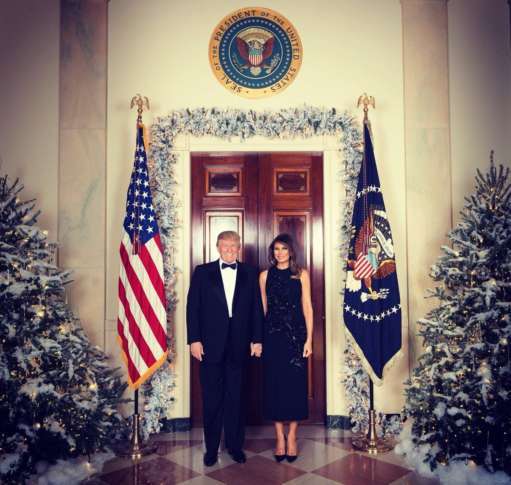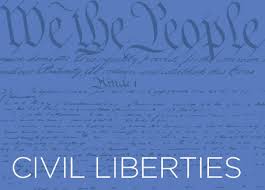Chapter 1 – Principles of Government
Section 1
Define government and the basic powers every government holds.
Identify the four defining characteristics of the state.
Section 2
Explain the difference between democracy and dictatorship.
Explain the difference between a unitary, federal, and confederate government.
Explain the difference between a presidential and parliamentary government.
Section 3
Identify and explain the five basic concepts of democracy.
Chapter 2 - Origins of American Government
Section 1
Identify the three basic ideas of government that influenced government in the English colonies.
Explain the significance of the following landmark English documents: the Magna Carta, the Petition of Right, the English Bill of Rights.
Section 2
Explain the essential ideas in the Declaration of Independence.
Summarize the common features of the first State constitutions.
Section 3
Describe the structure of the government set up under the Articles of Confederation.
Explain the weaknesses of the Articles of Confederation.
Section 4
Compare and contrast the Virginia Plan and the New Jersey Plan for a new constitution.
Summarize the major compromises that the delegates agreed to make and the effects of those compromises.
Section 4
Explain the Federalists and Anti-Federalists positions on the Constitution.
Chapter 3 – The Constitution
Section 1
Identify the important elements of the Constitution.
Explain the six basic principles of the Constitution.
Section 2
Identify the four different ways by which the Constitution may be formally changed.
Explain the purpose of the Bill of Rights.
Section 3
Explain how the Constitution has been changed by legislation, executive action, and court decisions.
Chapter 4 – Federalism
Section 1
Define federalism and explain why the Framers of the Constitution chose this system of government.
Identify powers delegated to and denied to the National Government.
Identify powers reserved for and denied to the States.
Explain exclusive and concurrent powers.
Section 2
Identify three obligations that the Constitution places on the National Government for the benefit of the States.
Section 3
Explain why States make interstate compacts.
Chapter 5 – Political Parties
Section 1
Define a political party.
Describe the major functions of political parties.
Section 2
Explain why the United States has a two-party system.
Section 3
Explain the origins of political parties in the United States.
Section 4
Identify the types of minor parties that have been active in American politics.
Explain the importance of minor parties.
Section 5
Identify the main elements of major party organization at the national level.
Chapter 6 – Voters and Voter Behavior
Section 1
Summarize the history of voting rights in the United States.
Explain the constitutional restrictions on the States’ power to set voting qualifications.
Section 2
Identify the universal requirements for voting in the United States.
Section 3
Describe the 15th amendment and the tactics that were used to circumvent it in an effort to deny African Americans the vote.
Explain the major civil rights laws enacted since 1950.
Section 4
Identify people who do not vote.
Explain factors that influence voting behavior.
Chapter 7 – The Electoral Process
Section 1
Explain why the nominating process is a critical first step in the election process.
Describe the ways to nominate a candidate.
Section 2
Explain how the administration of elections helps make democracy work.
Identify the various ways in which voters can cast their ballots.
Section 3
Describe the various sources of funding for campaign funding.
Identify ways that campaign financing is regulated.
Explain hard money and soft money.
Chapter 8 – Mass Media and Public Opinion
Section 1
Explain public opinion and identify factors that shape it.
Section 2
Identify the steps of the polling process.
Section 3
Explain how mass media influences politics.
Chapter 9 – Interest Groups
Section 1
Describe the role of interest groups in influencing public policy.
Compare and Contrast political parties and interest groups.
Section 2
Describe four categories of groups based on economic interests.
Identify other types of interest groups.
Section 3
Explain interest groups’ three major goals in influencing public opinion.
Explain how interest groups use propaganda.
Explain how lobbying is used to influence public policy.
Chapter 10 – Congress
Section 1
Describe a term of Congress and the different types of sessions.
Section 2
Describe the size and the elective terms of the members of the House.
Explain how House seats are reapportioned among the states after each census.
Identify the qualifications for election to the House.
Compare the size and term of the Senate to that of the House of Representatives.
Identify the qualifications for election to the Senate.
Section 4
Describe the duties performed by those who serve in Congress.
Chapter 11 – Powers of Congress
Section 1
Identify the three types of congressional power.
Compare the strict construction and liberal construction position on the scope of congressional power.
Section 2
Summarize key points relating to Congress’s power to tax.
Explain Congress’s other powers: borrowing, commerce, and currency.
Section 3
Identify the key sources of Congress’s foreign relations power.
Describe the power-sharing arrangement between Congress and the President on the issues of war and national defense.
List other key powers exercised by Congress.
Section 4
Explain how the Necessary and Proper Clause gives Congress flexibility in lawmaking.
Section 5
Describe Congress’s role in amending the Constitution, deciding elections, and impeaching.
Describe Congress’s executive and investigatory powers.
Chapter 12 – Congress in Action
Section 1
Describe how and when Congress convenes.
Compare the roles of the presiding officers in the Senate and the House.
Identify the duties of the party officers in Congress.
Describe how committee chairmen are chosen and explain their role in the legislative process.
Section 2
Explain how the standing committees function. Describe the duties and responsibilities of the House Rules Committee
Compare the functions of joint and conference committees.
Section 3
Identify the types of bills and resolutions that can be introduced.
Explain what happens to a bill once it is referred to a committee.
Explain how House leaders schedule debate on a bill.
Explain what happens to a bill on the House floor, and identify the final step in the passage of a bill in the House.
Section 4
Explain how a bill is introduced in the Senate.
Compare the Senate’s rules for debate with those in the House.
Describe the role of conference committees in the legislative process.
Identify the actions the President can take after both houses have passed a bill.
Chapter 13 – The Presidency
Section 1
Identify the roles of the President.
Identify the qualifications to become President.
Identify the length of the President’s term.
Section 2
Explain how the Constitution provides for presidential succession and presidential disability.
Describe the role of the Vice President.
Section 3
Explain the original provisions for choosing the President.
Identify ways the presidential election process change as a result of 1800.
Section 4
Describe the role of conventions in the presidential nominating process.
Explain the role of presidential primaries.
Explain the role of the caucus-convention process.
Section 5
Describe the flaws in the electoral college.
Chapter 14 – The Presidency in Action
Section 1
Explain why Article II of the Constitution can be described as “an outline.”
Section 2
Identify the source of the President’s power to execute federal law.
Define the ordinance power and explain where it comes from.
Explain how the appointing power works.
Section 3
Explain how treaties are made and approved.
Explain why and how executive agreements are made.
Explain the power of recognition.
Describe the powers that the President has as commander-in-chief.
Section 4
Describe the President’s two major legislative powers.
Describe the President’s major judicial powers.
Chapter 15 – Government at Work: The Bureaucracy
Section 1
Define a bureaucracy and identify its three features.
Section 2
Describe the Executive Office of the President and identify its three agencies.
Section 3
Describe the work of the executive departments.
Section 4
Explain why Congress has created independent agencies.
Section 5
Explain the purpose of the civil service system.
Chapter 16 – Financing Government
Section 1
Explain how and why the Constitution gives Congress the power to tax.
Identify the most significant federal taxes collected today.
Section 2
List the nontax sources of Federal Government.
Describe federal borrowing.
Section 3
Identify the key elements of federal spending.
Chapter 17 – Foreign Policy and National Defense
Section 1
Define foreign policy and understand the difference between isolationism and internationalism.
Explain the roles of the Department of State and the Department of Defense.
Section 2
Identify other agencies that contribute to the nation’s security.
Section 3
Section 4
Identify the two types of foreign aid.
Chapter 18 – The Federal Court System
Section 1
Describe the structure of the national judiciary.
Identify the criteria that determine whether a case is within federal court jurisdiction.
Explain the process for appointing federal judges.
Identify the terms of office for federal judges.
Section 2
Describe the jurisdiction of the federal district courts and the federal courts of appeals.
Section 3
Define the concept of judicial review.
Describe the scope of the Supreme Court’s jurisdiction.
Explain how cases reach the Supreme Court.
Explain how the Court Operates.








